Picture yourself walking on a breathtaking bamboo trail Meghalaya is famous for, a skywalk handcrafted by locals. To your right, a steep cliff drops into a deep gorge, visible through the gaps in the bamboo bridges. On your left, the endless blue sky meets rolling green mountains and the crystal-clear waters of the Wahrew River in the valley below. You are on the Mawryngkhang trek, also known as the Bamboo Trail Meghalaya, one of the most thrilling trekking places in Meghalaya. Often referred to as the scariest treks of Meghalaya, this heart-pounding adventure begins in Wahkhen village, a hidden gem in the East Khasi Hills.
The trail features a series of stunning bamboo bridges, meticulously built by local villagers without any government assistance, making it one of the best offbeat places in Meghalaya. The journey starts in the remote Wahkhen trek route, leading down to the Wahrew River, across the towering Mawkhlieng cliff, and over narrow bamboo bridges, before ascending to Mawmoit viewpoint and finally reaching the mighty U-Mawryngkhang peak.
How to reach Wahkhen Village for the Mawryngkhang Trek
Reaching Wahkhen, the starting point of the Mawryngkhang trek, requires careful planning, as public transport options are nearly non-existent. The best way to reach here is by self-driving or hiring a private taxi if you don’t have your own vehicle. A private taxi should charge around Rs 3000-4000 for a full day.
Shillong to Wahkhen route follows the scenic and popular Shillong to Dawki road. Begin your journey early from Shillong, as the route covers approximately 50 km and takes about 2 hours.
Keep an eye out for a signboard at Pomlum Village, where you’ll need to take a detour to Wahkhen. From this point, the village is about 15 km away. The road leads you deeper into the breathtaking landscapes of the East Khasi Hills, setting the stage for one of the best trekking places in Meghalaya.
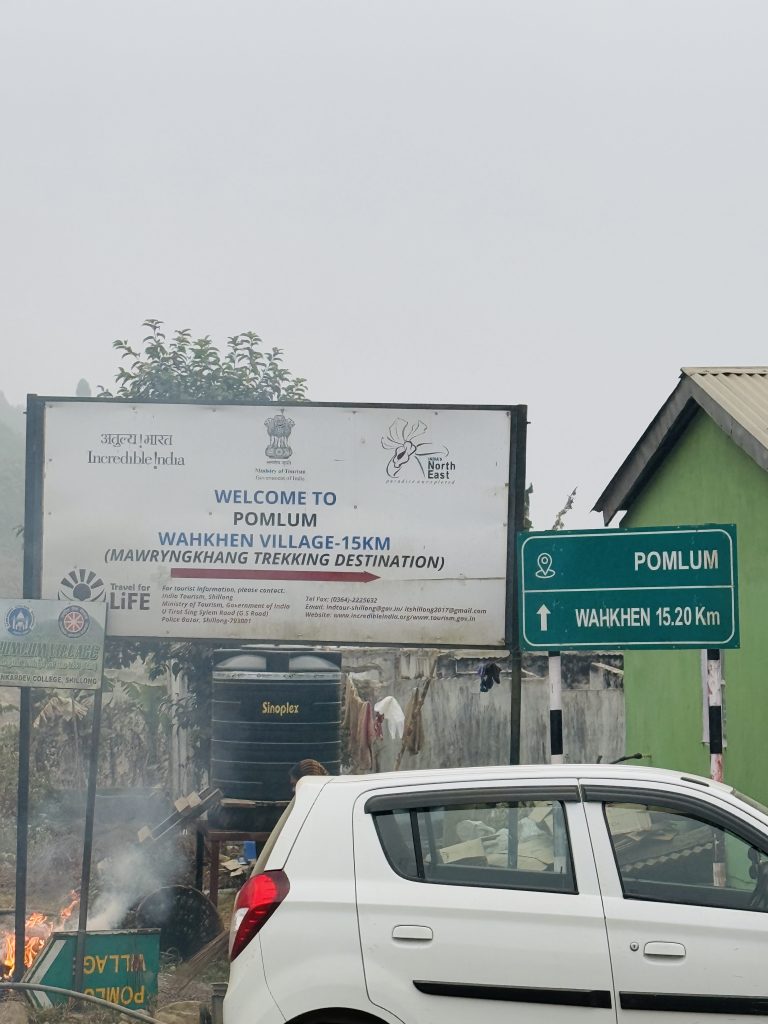
The legend of U Mawryngkhang – The king of stones
One of the most fascinating aspects of trekking places in Meghalaya is the rich folklore associated with them, and the Mawryngkhang trek is no exception. The Khasi community has a deep-rooted tradition of storytelling, often personifying rocks, waterfalls, and landscapes with mythical tales. The mighty U Mawryngkhang, the colossal rock at the trek’s pinnacle, holds one such legendary story.
The name “Mawryngkhang” translates to “King of Stones”, with the prefix “U” signifying respect. According to Khasi folklore, in the ancient era of living rocks, there was a fierce battle for supremacy. U Mawryngkhang emerged victorious, earning the title of the mightiest rock.
As the tale continues, Mawryngkhang fell in love with a beautiful rock named Kthiang from a neighboring kingdom. However, a rival rock, Mawpator, also desired Kthiang, leading to an intense battle. During the fight, Mawpator severed Mawryngkhang’s left arm, but the mighty warrior fought back, ultimately decapitating Mawpator.
Today, as you embark on the bamboo bridge trek Meghalaya is known for, the legend comes to life. At the top of U Mawryngkhang, you can see Kthiang standing behind him, while Mawpator’s severed head lies in the valley below. A missing chunk on one side of U Mawryngkhang is believed to be his severed arm.
This offbeat place in Meghalaya is not just a thrilling adventure but also a journey through Khasi mythology, making the Bamboo Trail Meghalaya a trek like no other.
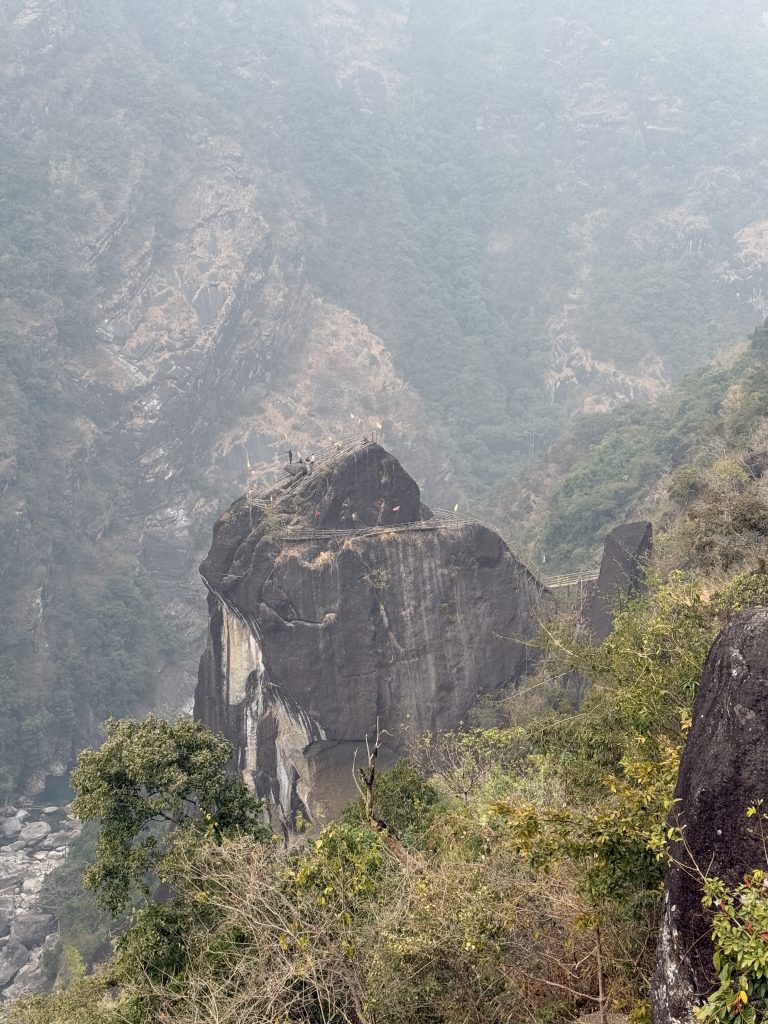
The trek route
In February 2025, we set out on one of the most exhilarating treks in Meghalaya—the Mawryngkhang trek. This trek is an absolute must for adventure seekers. However, if you have a fear of heights or prefer a more relaxed trail, this adrenaline-pumping experience might not be for you.
Wahkhen village to Wahrew river (0.05km)
From Wahkhen village, the Mawryngkhang trek begins with a moderate descent over well-laid stone steps, weaving through a lush bamboo grass plantation. A short walk ahead, you’ll come across a small bamboo hut that doubles as the trek’s ticket counter. The entry fee for the trek is ₹100 per adult and ₹50 for minors and students.
As we continued our descent, the first breathtaking glimpse of the Wahrew River came into view. Since we trekked in February, the water level was lower, yet the river remained pristine, reflecting an enchanting shade of crystal-clear blue. If you wish to camp near the riverbed, ensure you obtain necessary permissions at the ticket counter.
This is where we encountered the first bamboo bridge Meghalaya is known for. The bridge, handcrafted by local artisans, stood strong, a testament to the exceptional Khasi craftsmanship. A little further ahead, an iron suspension bridge awaited, offering another thrilling passage deeper into this bamboo trail trek Meghalaya is famous for.
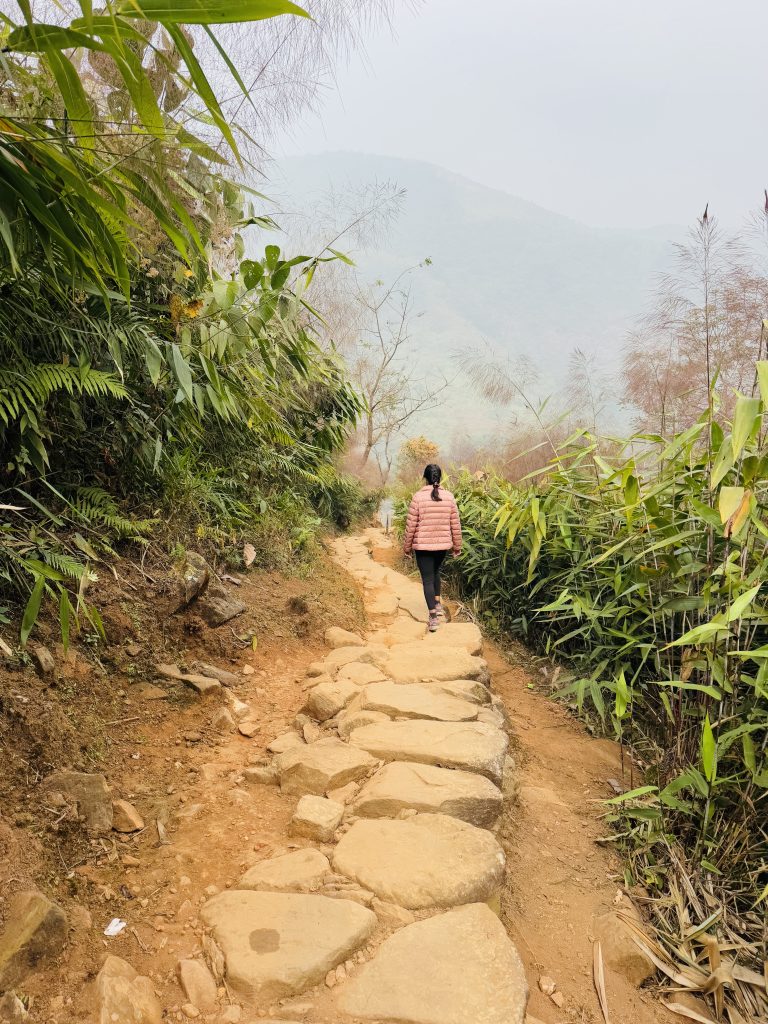
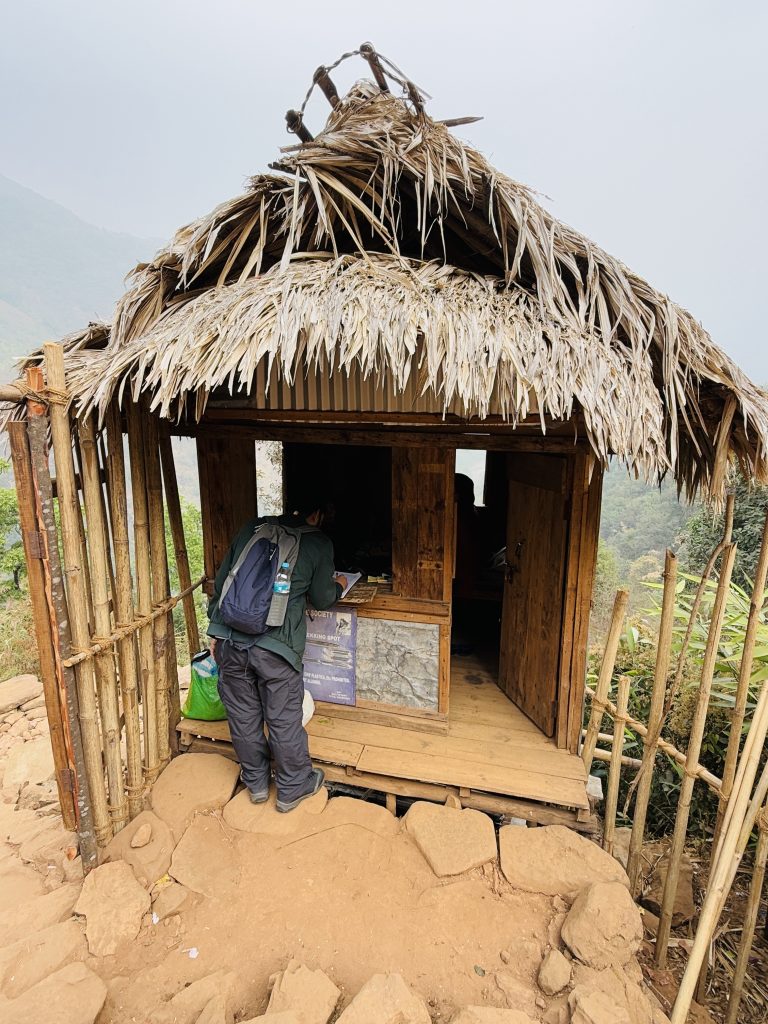
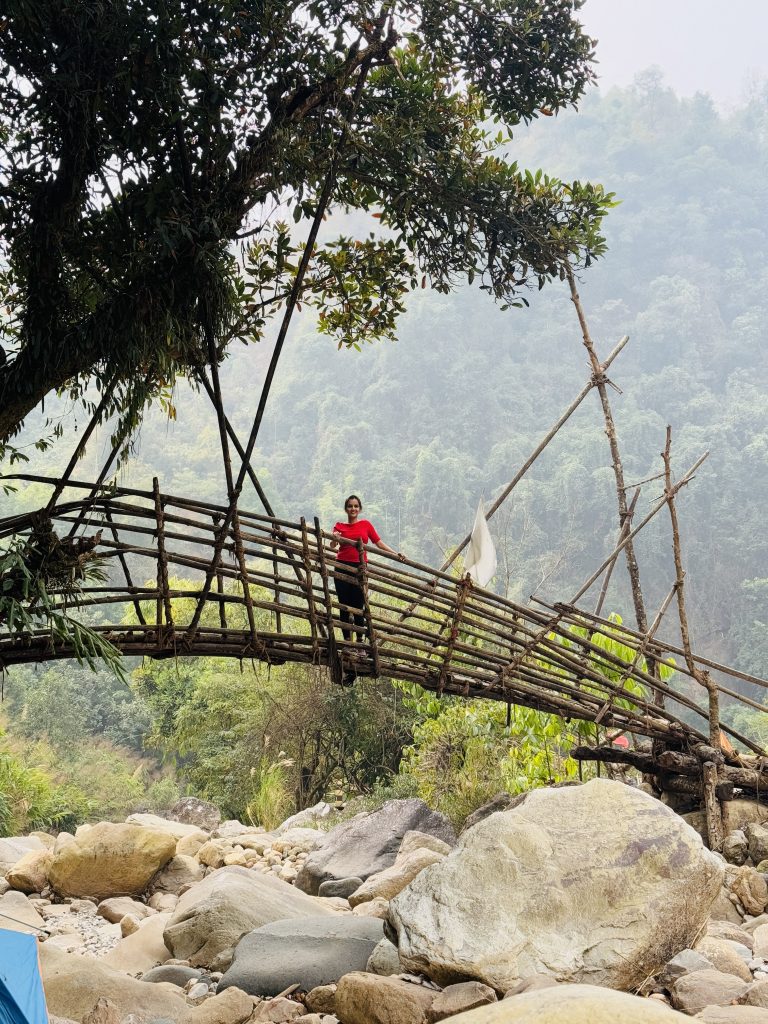
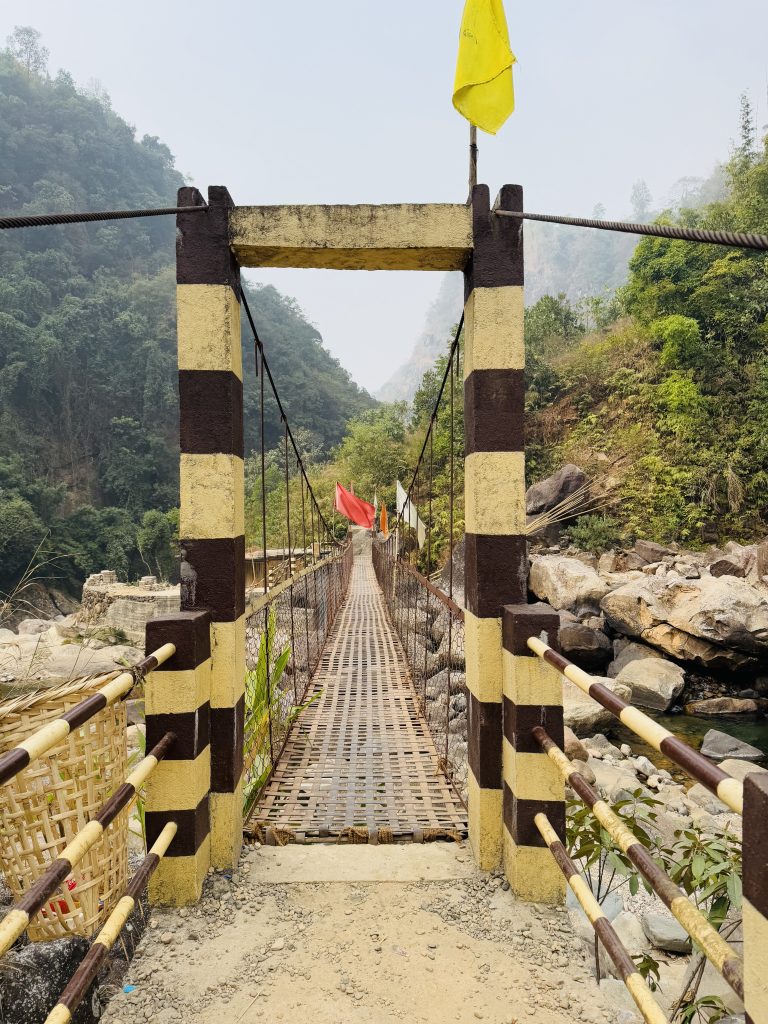
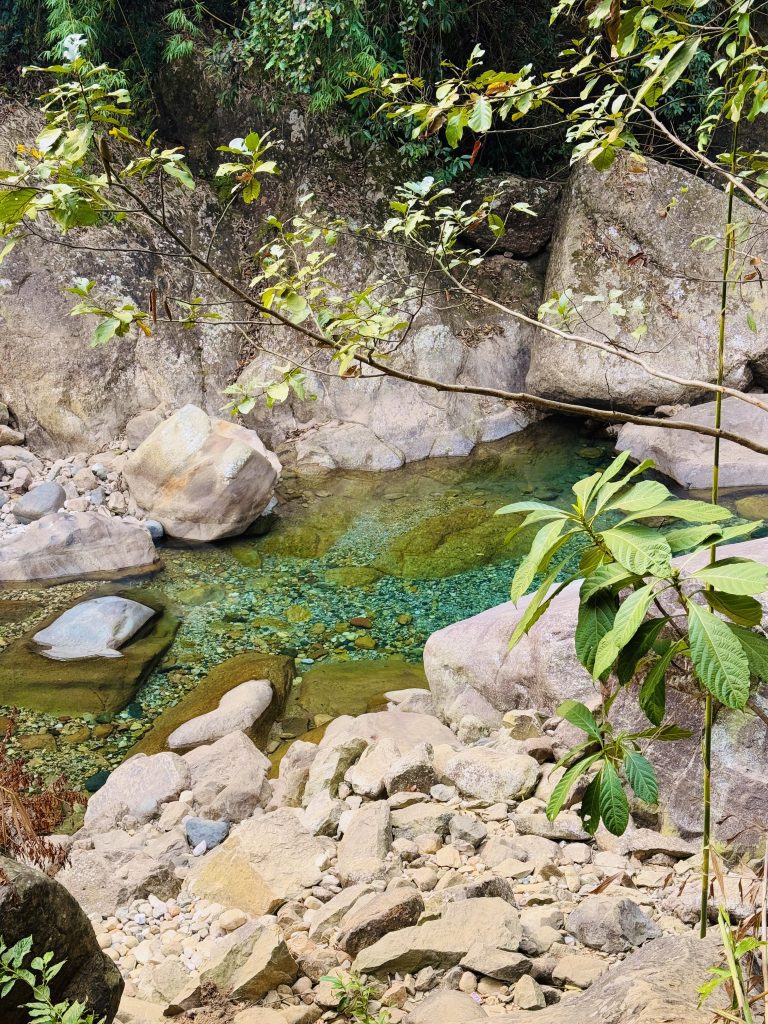
Wahrew river to Mawmoit Viewpoint (1.52km)
From the Wahrew River, the Mawryngkhang trek ascends through a mix of bamboo trails, muddy patches, and stone steps. The bamboo bridges along the route are remarkably well-maintained, showcasing the craftsmanship that makes this bamboo bridge trek Meghalaya so unique.
A little further along, you’ll reach a designated swimming spot in the Wahrew River, where you can take a refreshing dip for ₹30 per adult and ₹20 per minor.
Crossing a few more bamboo bridges, you arrive at the most challenging and thrilling section of the trek—an elevated bamboo skywalk clinging to the steep Mawkhlieng cliff on one side, with a dizzying drop into the gorge on the other. From this height, the Wahrew River below appears as a thin, winding line. While the bamboo trail is known for its sturdiness, the sheer exposure makes this section of the trek truly one of the scariest treks in Meghalaya. Anyone with a fear of heights should carefully consider this stretch before embarking on the trek.
Despite the adrenaline rush and moments of fear, we finally made it across the bamboo skywalk, feeling both relieved and exhilarated. The trail continued until we reached the Mawmoit viewpoint, where we got our first awe-inspiring glimpse of U Mawryngkhang—the mighty “King of Stones”, standing tall with Kthiang right behind him.
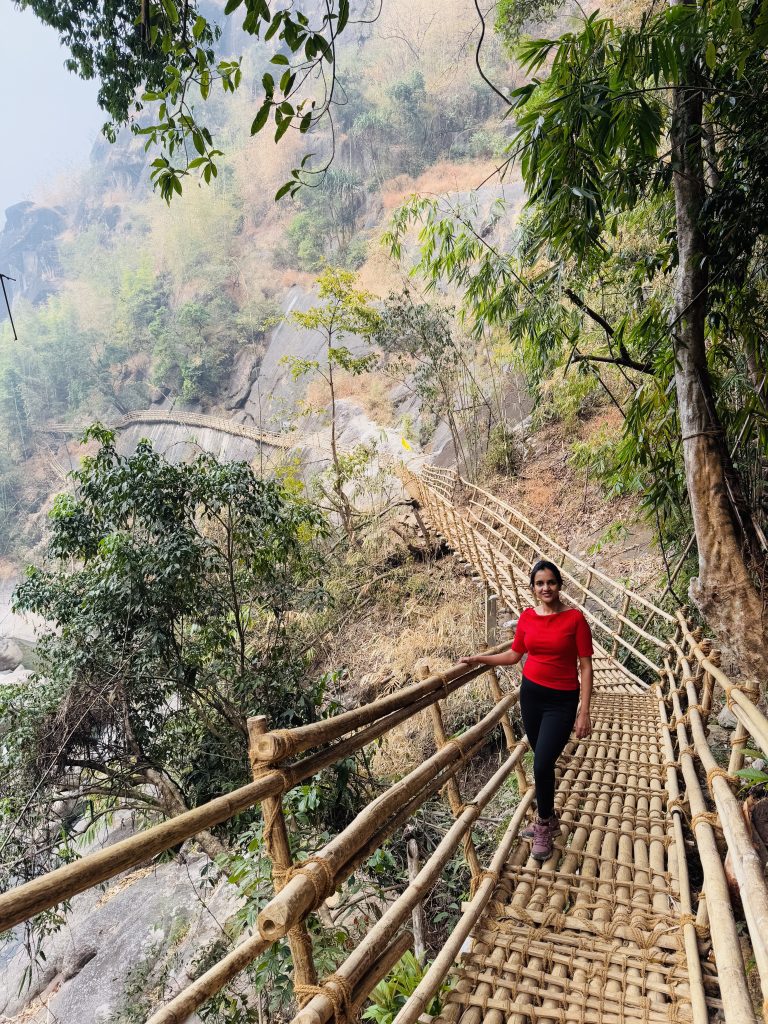
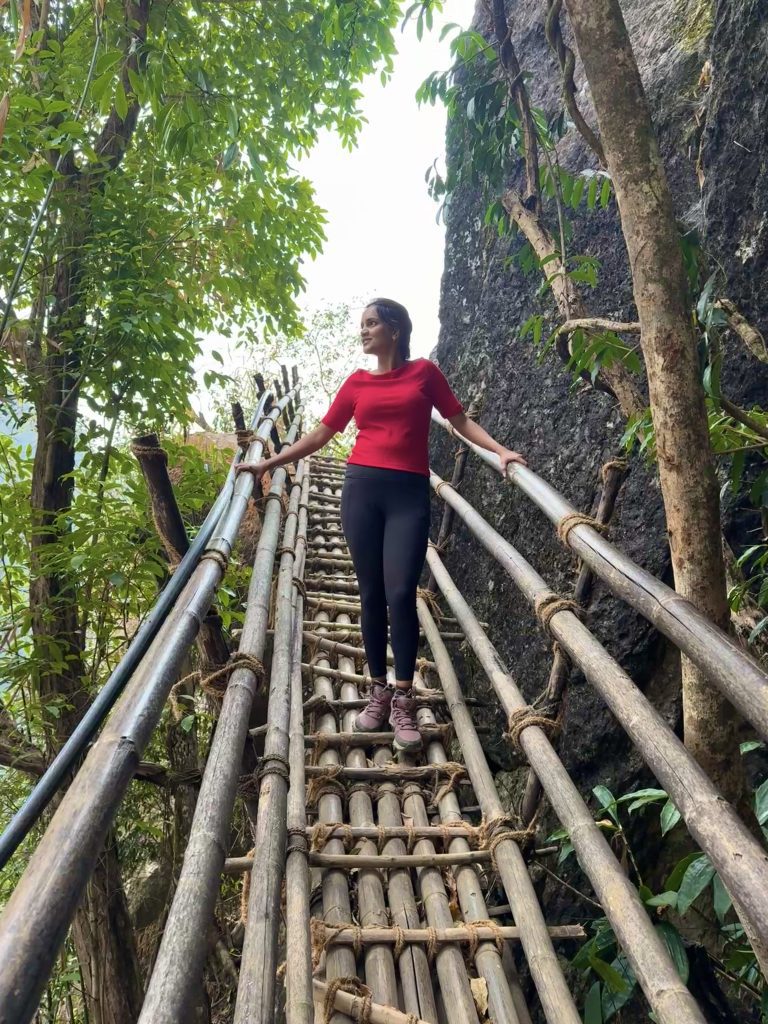
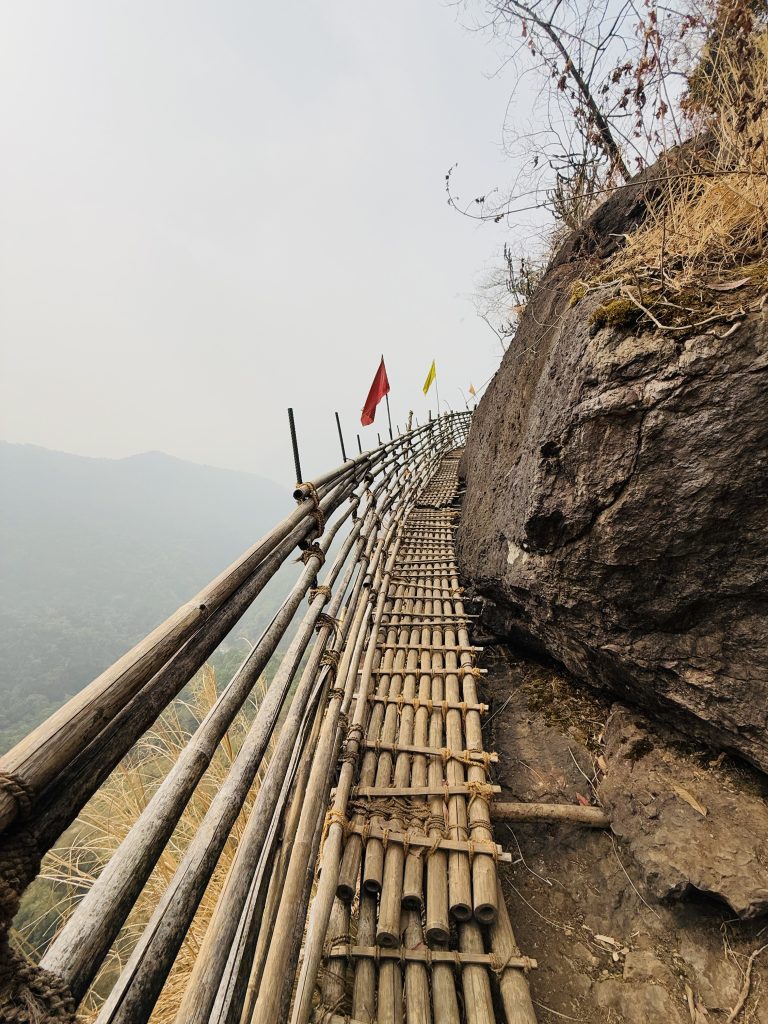
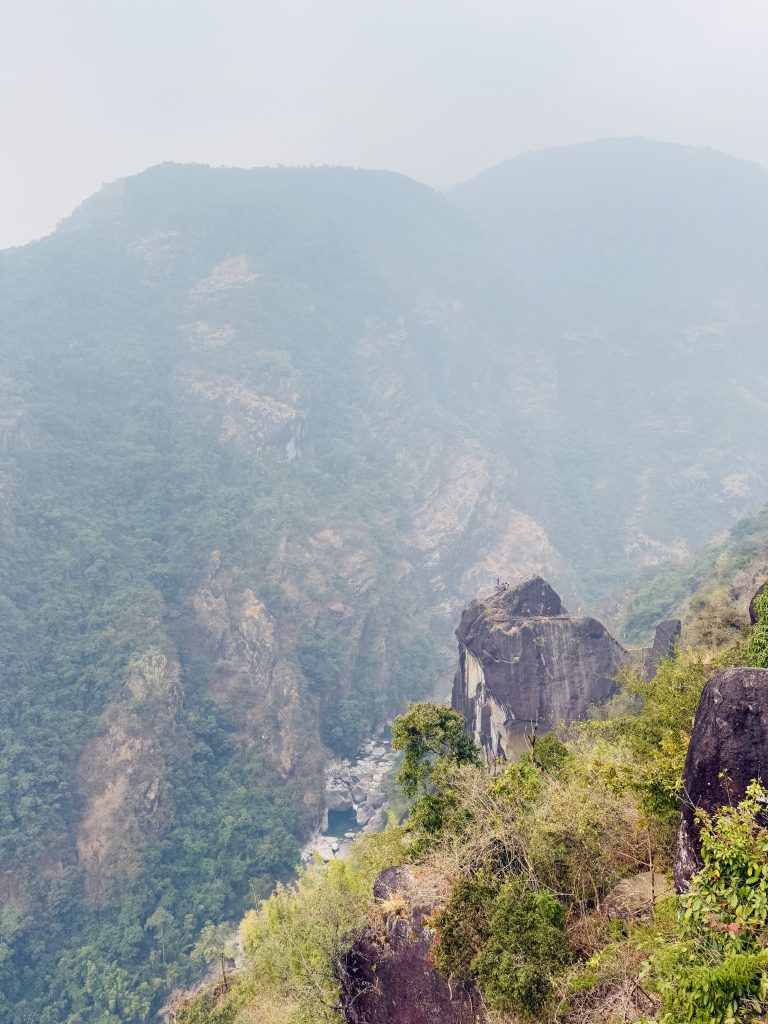
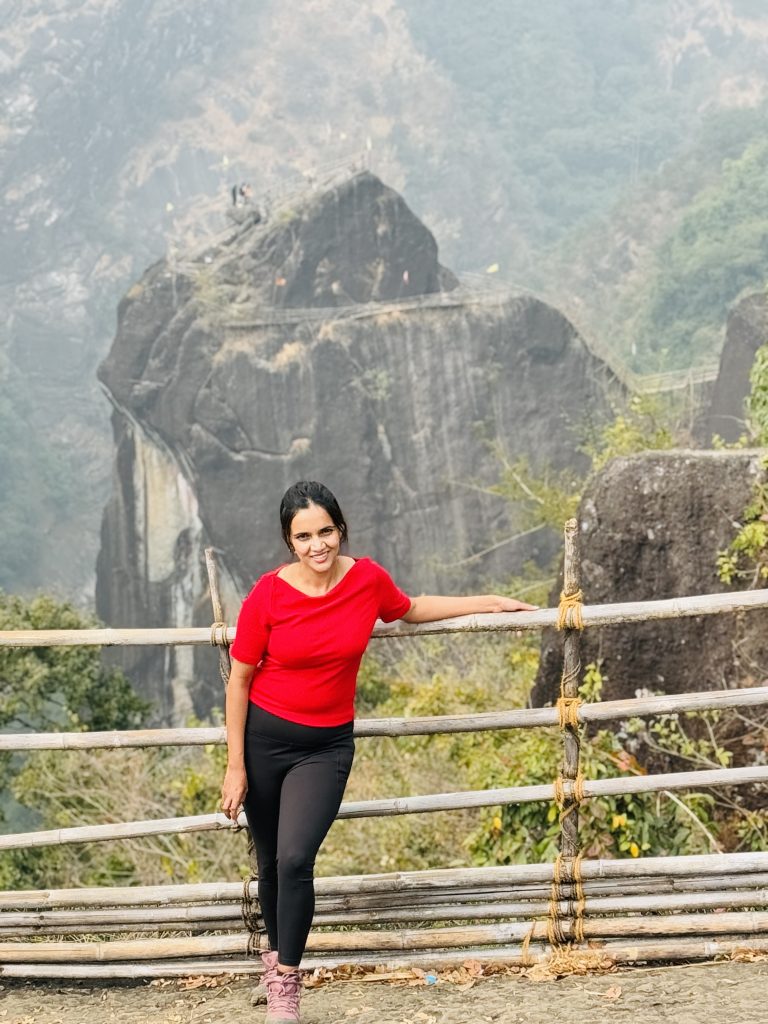
Mawmoit viewpoint to U Mawryngkhang (0.2km)
The trail continues its ascent through a series of bamboo bridges and a thrilling passage between two giant boulders. As you make your way forward, the path winds through more bamboo bridges and an archway, leading to the back of U Mawryngkhang.
The final stretch is a steep climb, testing your endurance before you finally reach the pinnacle of U Mawryngkhang, the King of Stones. At the summit, colorful flags flutter in the wind, and bamboo fencing provides a sense of security at the top.
Standing at the peak, we soaked in the sense of accomplishment—having conquered one of the most treacherous treks in Meghalaya. The panoramic view was breathtaking, with the Wahrew River cutting through the deep ravine below, its blue waters contrasting beautifully against the lush green mountains surrounding us. It was a moment of pure exhilaration—one that made every step of this bamboo trail trek Meghalaya absolutely worth it.
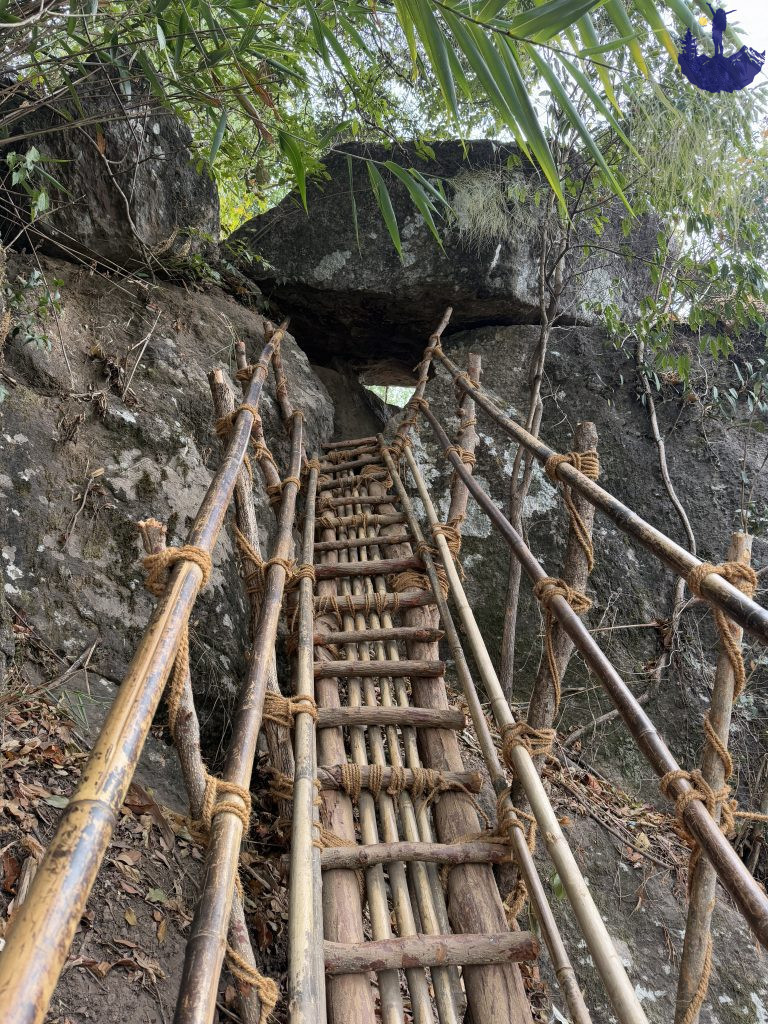
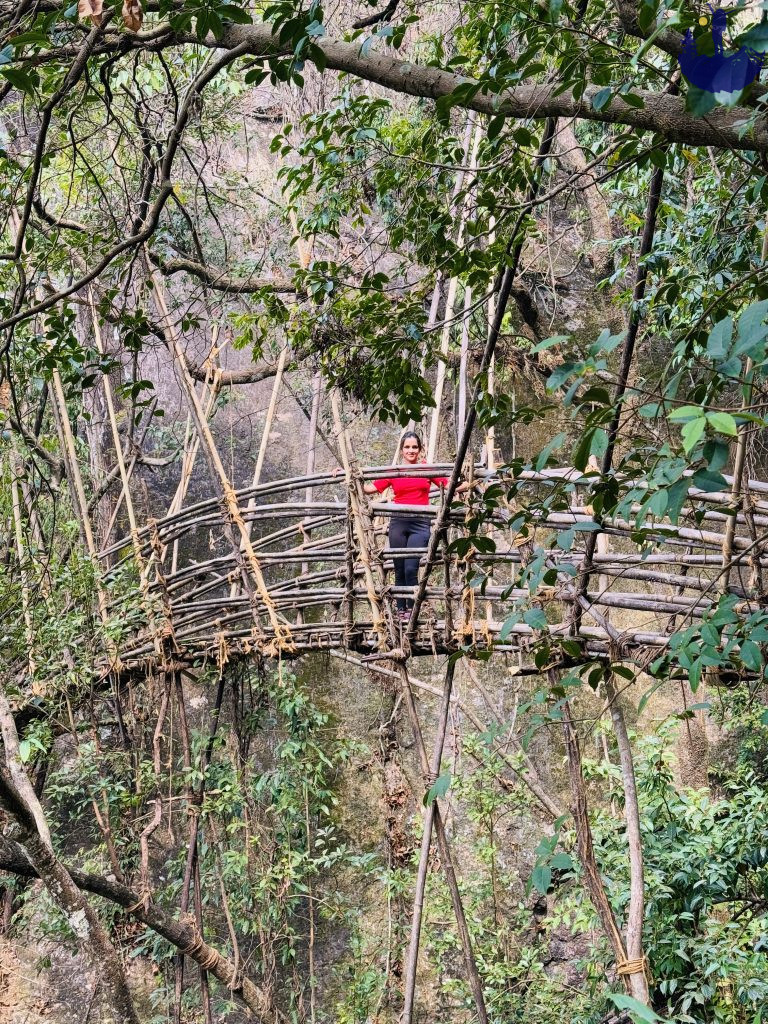
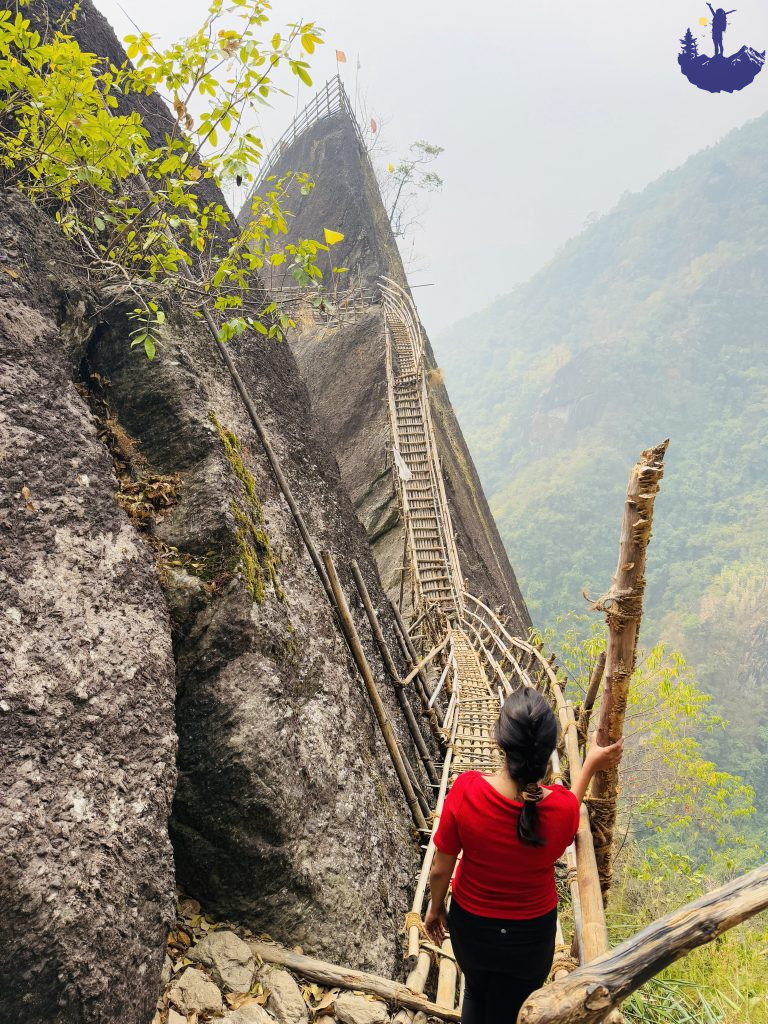
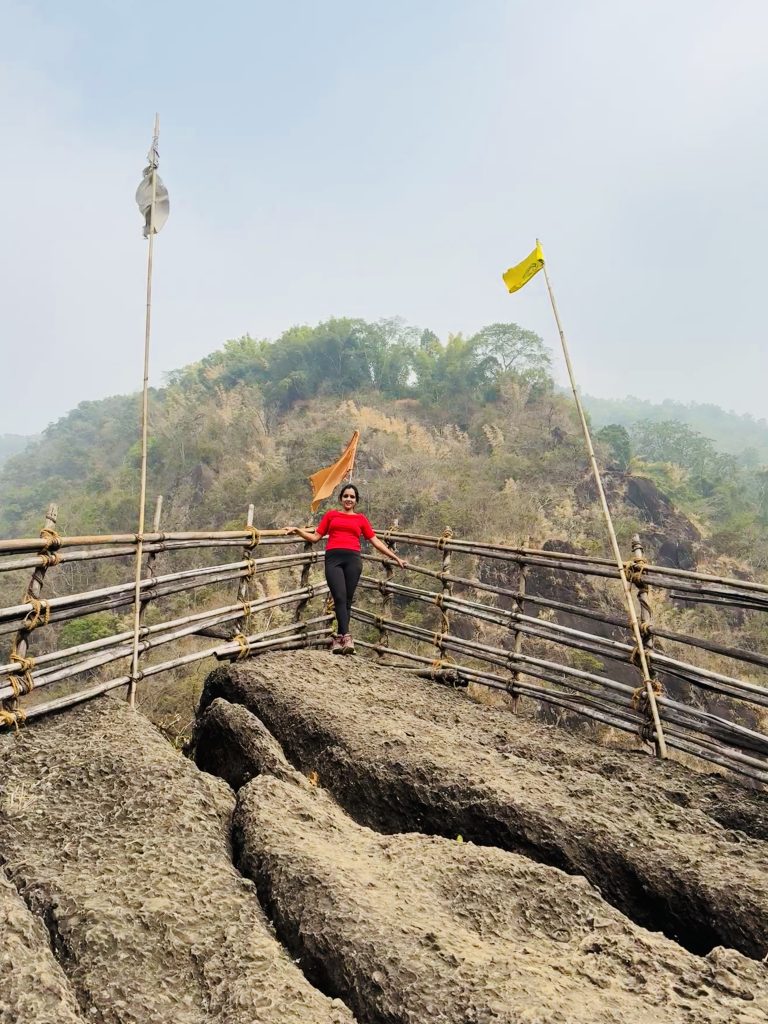
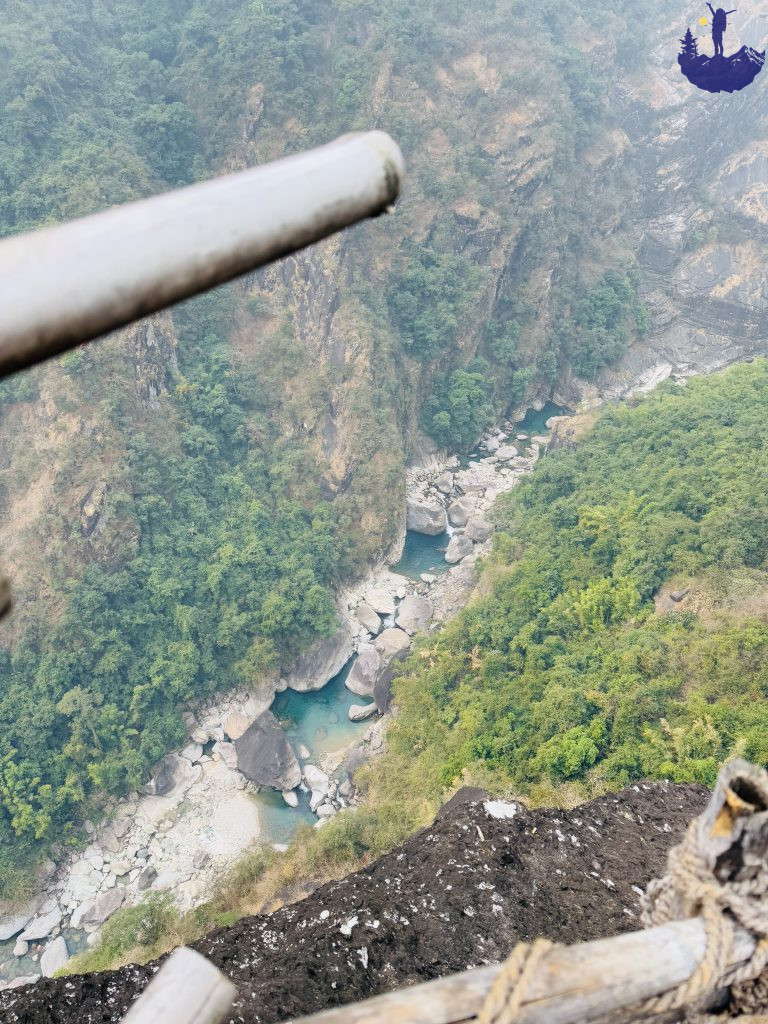
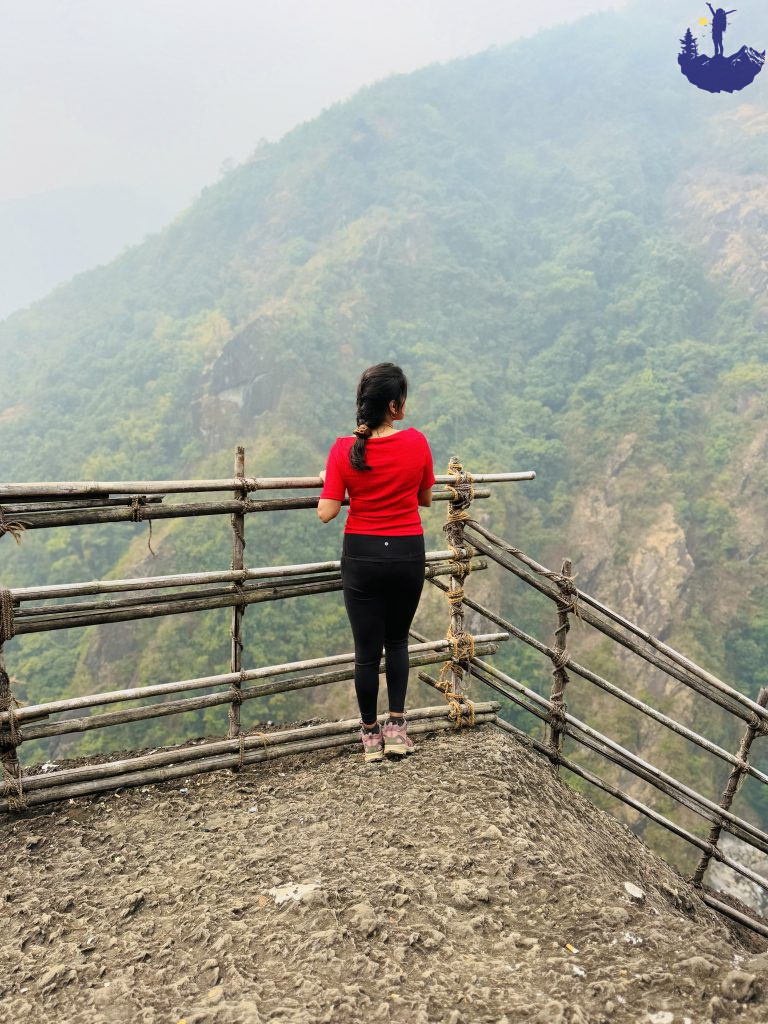
Back to Wahkhen village
The trek back from U Mawryngkhang is relatively easy, with a steady descent leading toward the Wahrew River. Upon reaching the riverbed, we took a well-deserved break at one of the local stalls, indulging in a steaming cup of Maggi while soaking in the tranquil surroundings. The Wahrew River flowed gently, its crystal-clear waters revealing colorful stones beneath, creating a picture-perfect scene that looked almost like a painted wallpaper. Small fish swam in the shallow waters, adding to the pristine charm of this offbeat place in Meghalaya.
The final stretch toward the parking lot involved a steep ascent, making it a bit tiring after the long trek. With a few short breaks, some lost breath, and a sense of accomplishment, we finally made it back, carrying with us memories of one of the most unique and thrilling treks in Meghalaya.
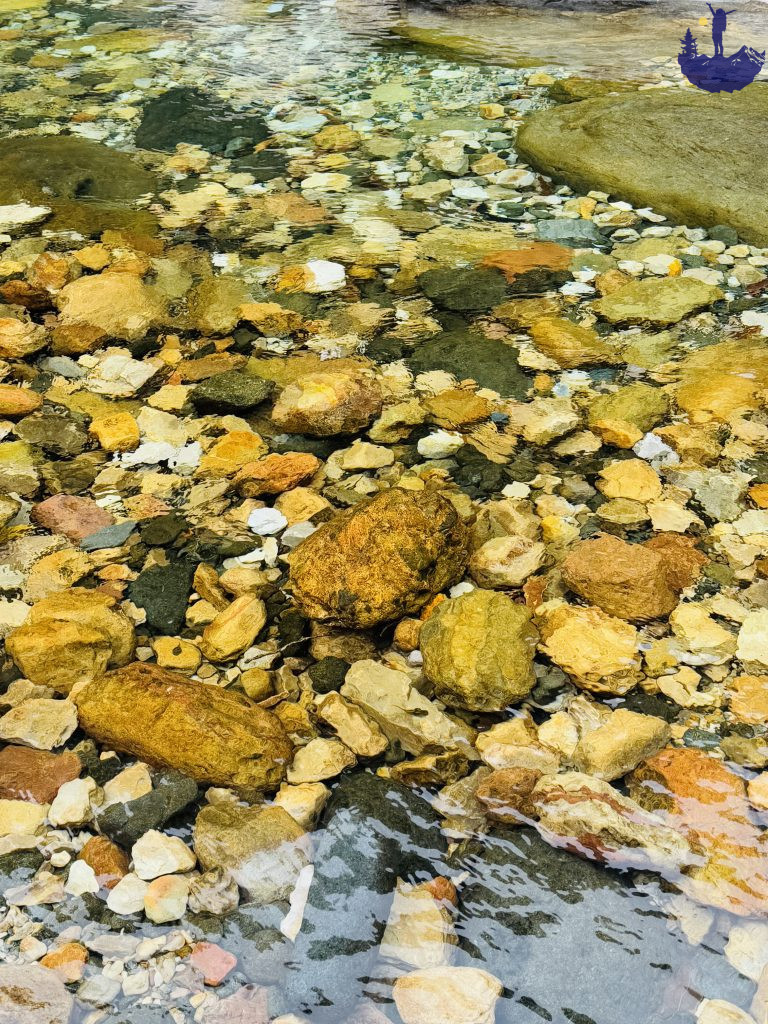
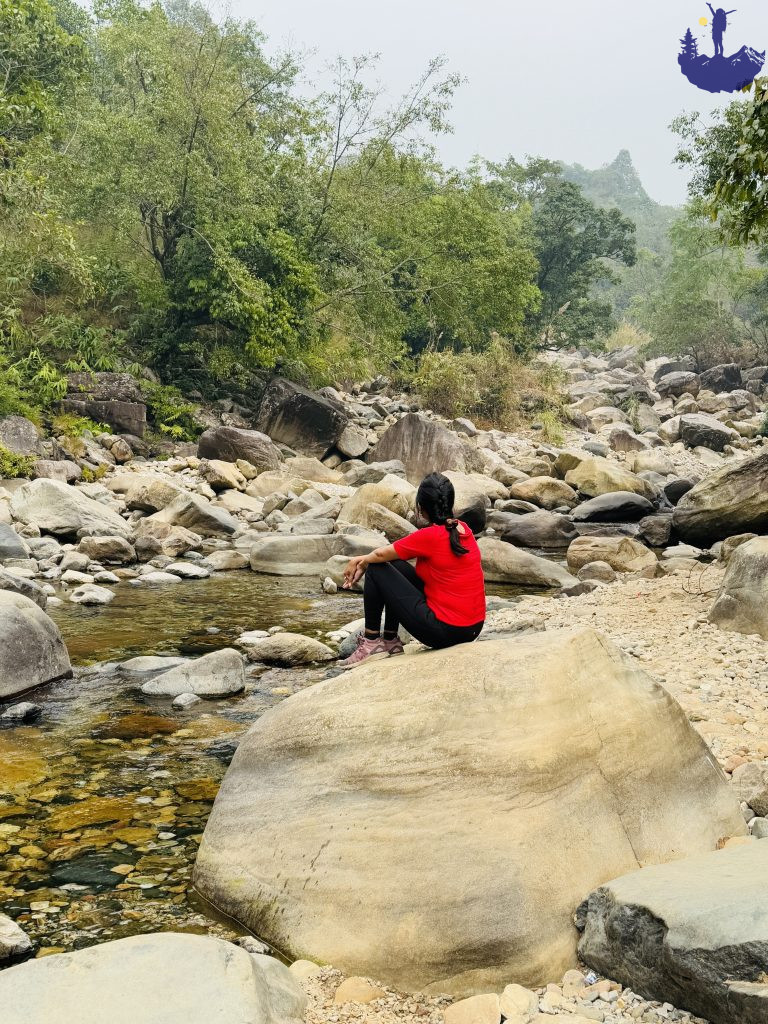
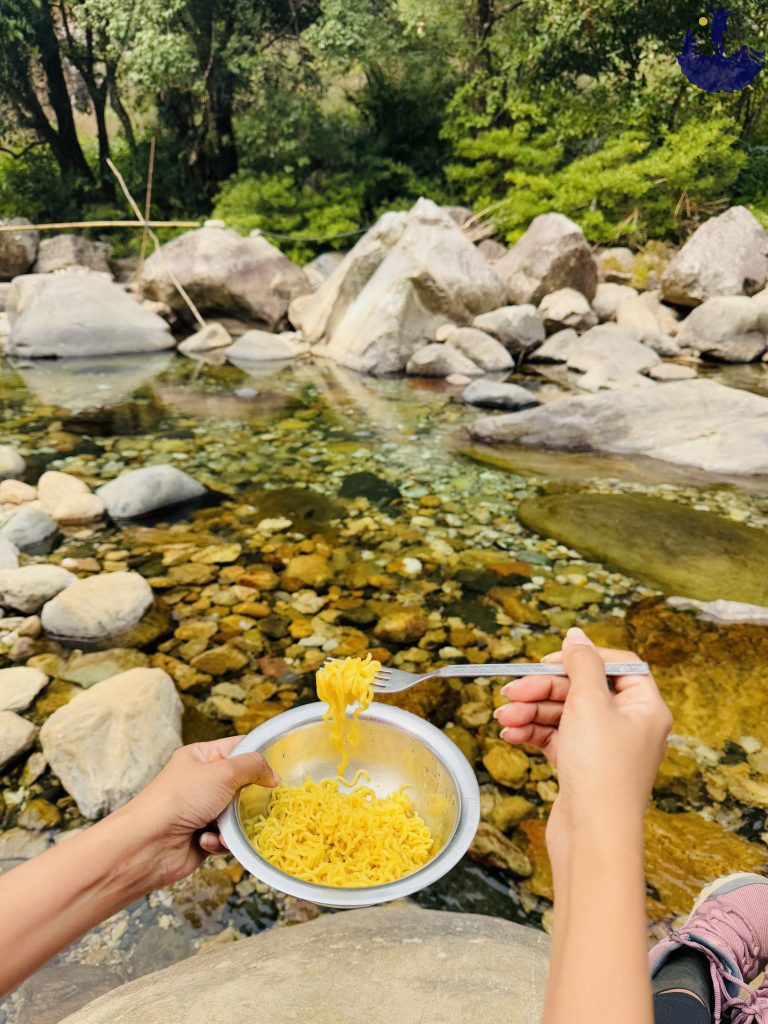
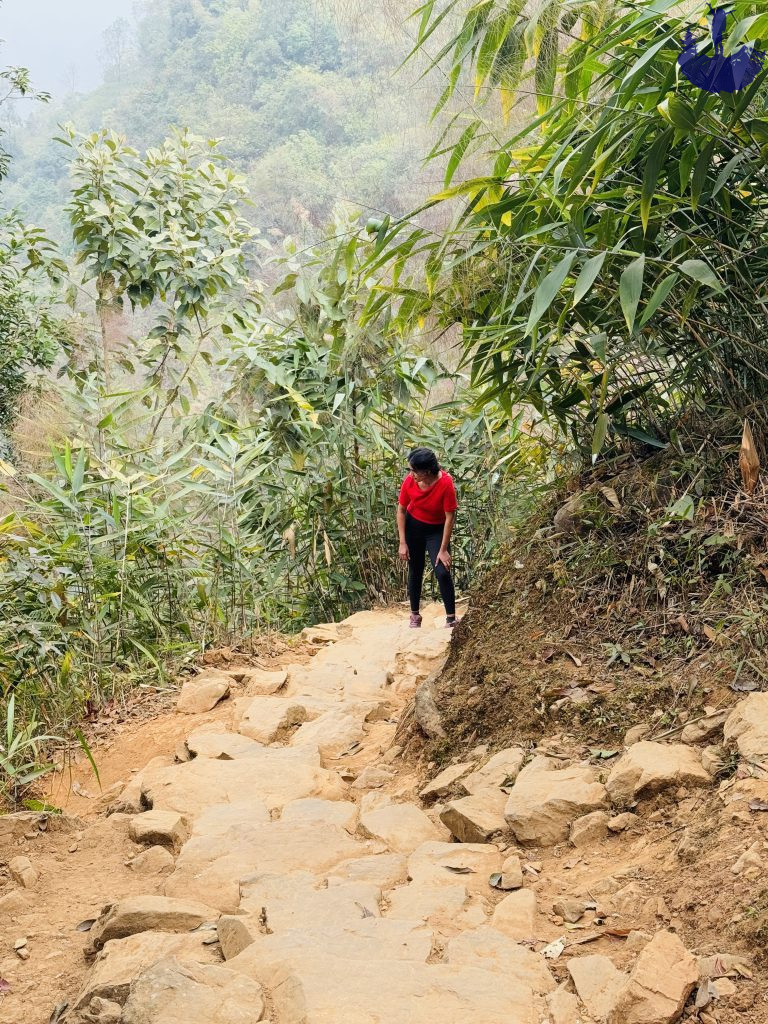
Essential trekking information for the Mawryngkhang Trek
If you’re planning to embark on the Mawryngkhang trek, also known as the Bamboo Trail Meghalaya, here’s everything you need to know for a smooth and enjoyable experience.
- Trek Distance & Duration: The total round-trip distance of this bamboo trek Meghalaya offers is approximately 3.54 km, taking about 3-4 hours to complete, allowing for plenty of breaks to rest and capture scenic shots.
- Guide Requirement: No guide is required as the bamboo bridge trek Meghalaya has a well-marked trail.
- Entry Fees: ₹100 per adult and ₹50 per minor or student.
- Swimming in Wahrew River: If the water level is sufficient, you can take a dip in the Wahrew River for a fee of ₹30 per adult and ₹20 per minor.
- Parking & Facilities: Parking is available at Wahkhen village, and clean public restrooms are accessible at the trek’s starting point.
- Food & Refreshments: Small shops and food stalls are present at the trek’s start and along the route. It is advisable to carry snacks, a water bottle, and energy bars for the journey.
- Cash & Connectivity: No ATMs are available nearby, so ensure you carry enough cash. Mobile network connectivity is decent for most carriers throughout the trek.
- Trek Timing: Start early from Shillong to avoid returning after dark.
- Responsible Trekking: This offbeat place in Meghalaya is pristine—avoid littering and ensure you leave no waste behind.
With its breathtaking bamboo bridges and awe-inspiring landscapes, the best trekking places in Meghalaya don’t get better than this!
Did this guide inspire you to take on the thrilling Mawryngkhang trek? Drop a comment below and let me know if this bamboo bridge trek Meghalaya is on your adventure list or if you’ve already experienced it.




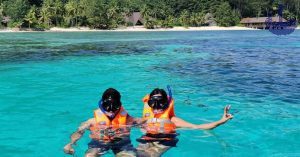

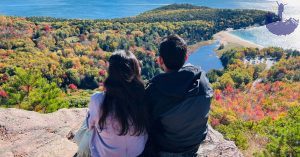

One Response